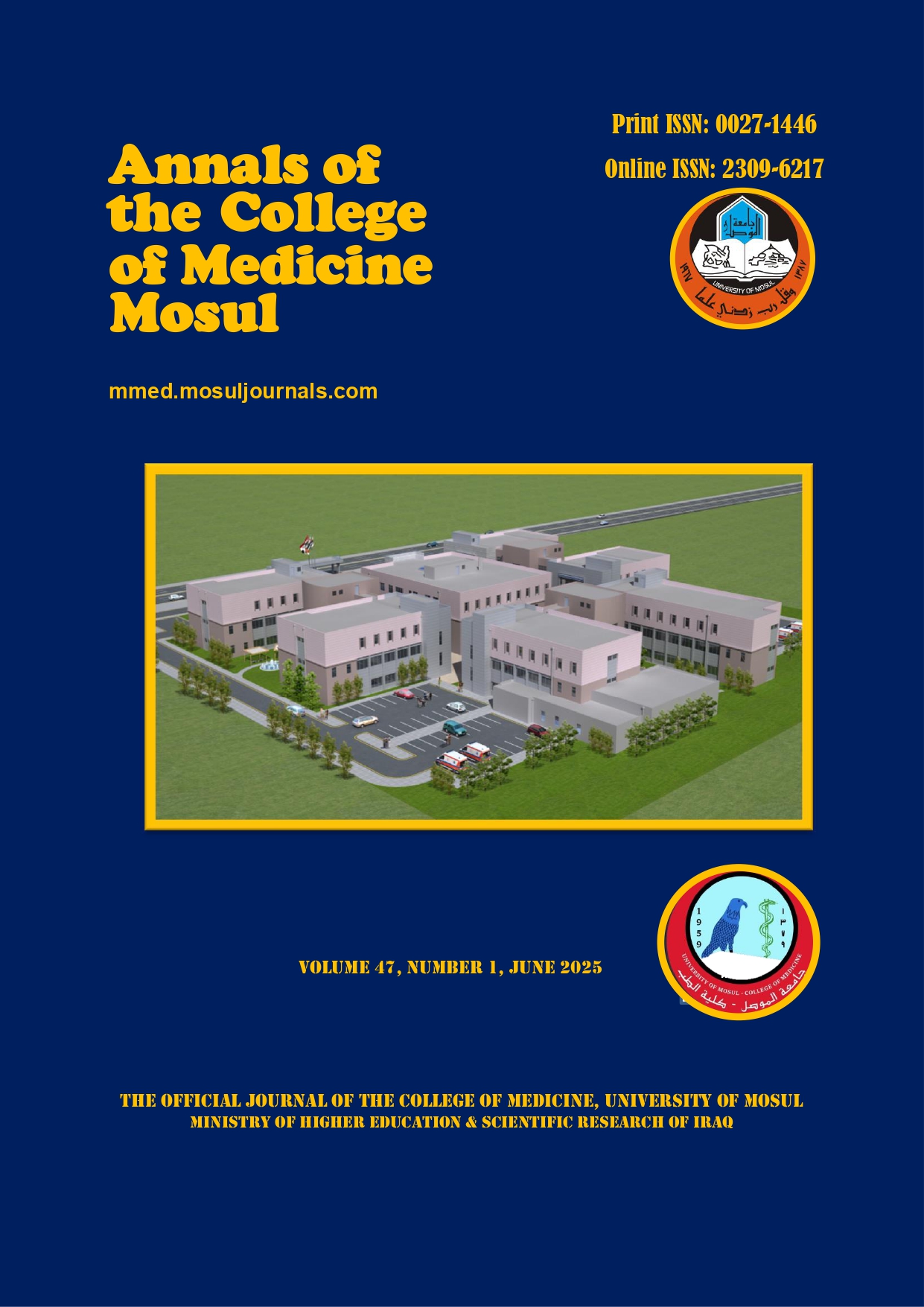Silver Nanoparticle Impact as Antibacterial and Antibiofilm Agent Against MDR K.pneumonaie in Mosul City
Abstract
The prevalence of antibiotic resistance continues to rise rapidly, necessitating the development of innovative approaches to combat diseases caused by drug-resistant bacteria. One of these approaches is pharmaceutical nanotechnology, which has the potential to generate novel therapeutic compounds for biomedical applications. Of these substances, silver nanoparticles (AgNPs) exhibit promising antibacterial and anti-biofilm properties. Two hundred and thirty different clinical samples (urine, sputum, diabetic foot pus, pleural fluid, tracheostomy tube, cerebrospinal fluid, folly's catheter, ear swab, and blood) were collected looking for K.pneumonaie, which are multiple drug-resistant (MDR). Twenty-three K.pneumonaie clinical isolates were identified by conventional bacteriological media and confirmed by the VITEK-2GN system. Then, the biofilm-forming activity was assessed using qualitative methods such as Congo Red agar and quantitative methods suchasmicrotiter plate assay that involved crystal violet staining. Conventional PCR detected fimH and mrkD biofilm gene frequency among biofilm-producing K.pneumonaie. The chemically synthesizedAgNPs were used, and their Minimal Inhibitory Concentration(MIC) and Minimal Biofilm Inhibition Concentration (MIBC) were determined. Biofilm genes, namely fimH and mrkD gene, had been detected before and after treatment with silver nanoparticles in the clinical isolates. The findings indicated that all isolates resisted the tested antibiotics and could build biofilms to various degrees (19 had strong biofilm capability,3 were moderate biofilm producers, and only 1 had weak biofilm production capability).The susceptibility of all isolates to AgNPs was demonstrated by their antibacterial activity, with MIC and MIBC values being 50000 g/ml or25000g/ml according to the isolates. In addition, applying AgNPs resulted in a substantial decrease in biofilm formation, with 8out of 23isolates converting to non-biofilm producers. Biofilm genes fimH and mrkD were present in 100% and 78.26%, respectively, and not affected by silver nanoparticle treatment. There was a synergistic effect between silver nanoparticles and imipenem in compacting MDR K.pneumonaie.
